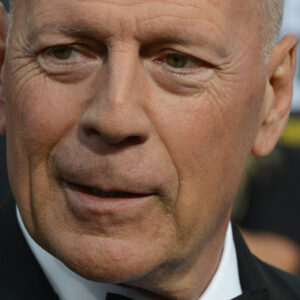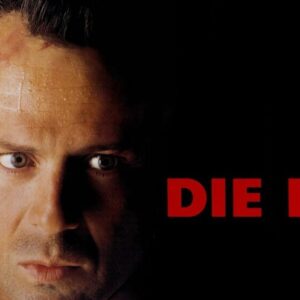Introduction
Bruce Willis, a name synonymous with Hollywood, has left an indelible mark on the film industry over the course of his illustrious career. From his early days as a wisecracking TV detective to his iconic portrayal of action heroes, Willis’s journey is a fascinating study of how an actor can evolve, adapt, and remain relevant across decades. His on-screen transformation mirrors the changing trends and tastes in cinema, making him not only a versatile actor but also a cultural icon who has defined and redefined the action genre multiple times. This article takes an in-depth look at Bruce Willis’s on-screen evolution, charting his journey from the mid-1980s to the present day, and examining how his roles reflect the shifting dynamics of Hollywood.
1. The Early Years: The Rise of the Everyman Hero
Moonlighting and the Birth of a Star
Bruce Willis’s rise to stardom began with the television series Moonlighting (1985-1989), where he starred as David Addison, a charming and witty private detective. This role was a departure from the typical leading man of the era, showcasing Willis’s unique blend of humor and charisma. The character of Addison was far from the stoic, muscle-bound heroes that dominated the screen at the time. Instead, he was relatable, with a quick wit and a knack for getting into and out of trouble with style.
Moonlighting was a game-changer for television, blending comedy, drama, and romance in a way that had never been done before. Willis’s portrayal of Addison was central to the show’s success, earning him critical acclaim and a devoted fanbase. It was here that Willis’s everyman appeal began to take shape—he wasn’t just another pretty face; he was a charismatic performer with a knack for delivering lines with perfect timing and a twinkle in his eye that made audiences root for him.
Die Hard and the Redefinition of the Action Hero
Willis’s big break in film came with Die Hard (1988), a role that would cement his place in Hollywood history. As John McClane, Willis portrayed an everyman action hero—one who wasn’t invincible, but rather, vulnerable, tired, and often out of his depth. McClane wasn’t a superhero; he was a New York cop on vacation, caught up in a situation far beyond his control. This relatability was key to the character’s—and the film’s—success.
At the time, the action genre was dominated by larger-than-life figures like Arnold Schwarzenegger and Sylvester Stallone, who played virtually indestructible characters. Die Hard broke this mold, presenting a protagonist who bled, bruised, and made mistakes. McClane’s vulnerability, combined with his relentless determination and sharp wit, made him an instant hit with audiences. The film’s success catapulted Willis into the ranks of Hollywood’s A-list and set the stage for his future as an action star.
Die Hard wasn’t just a box-office success; it was a cultural phenomenon that redefined the action genre. Willis’s portrayal of McClane became the blueprint for a new kind of action hero—one who was tough but human, strong but relatable. This everyman hero archetype resonated with audiences, who saw in McClane a character who could be them. Willis’s ability to balance humor, vulnerability, and sheer grit made McClane one of the most iconic characters in film history, and Die Hard became a template for countless action films to come.
2. The 1990s: Cementing the Action Hero Persona
The Rise of the Action Hero
The 1990s was a decade where Bruce Willis solidified his status as one of Hollywood’s premier action stars. The success of Die Hard led to a slew of sequels and action films that capitalized on Willis’s ability to play the tough, resourceful hero who could save the day, often against impossible odds.
Die Hard 2 (1990) saw Willis reprise his role as John McClane, this time in an airport setting, facing off against terrorists once again. While the sequel didn’t break new ground in terms of character development, it reinforced the qualities that made McClane—and Willis—so popular. The film was a commercial success, proving that audiences wanted more of Willis’s everyman hero in action-packed scenarios.
Die Hard with a Vengeance (1995) took the franchise to new heights, pairing McClane with Samuel L. Jackson’s Zeus Carver in a race against time across New York City. The film delved deeper into McClane’s character, exploring his flaws, his strained relationships, and his struggle with alcoholism. This added depth to McClane, making him more than just an action hero; he was a man fighting his own demons while trying to save others. Willis’s portrayal of a weary, beaten-down McClane resonated with audiences and critics alike, further cementing his place as an action star who could bring emotional complexity to his roles.
Expanding the Action Hero Archetype
Beyond the Die Hard franchise, Willis continued to explore the action genre in innovative ways. In The Last Boy Scout (1991), he played a cynical private detective teaming up with a disgraced football player to solve a murder mystery. The film was a blend of action, comedy, and noir, showcasing Willis’s versatility in balancing humor with intense action sequences. His character, Joe Hallenbeck, was another iteration of the everyman hero—flawed, jaded, but ultimately driven by a sense of justice.
Willis’s action hero persona wasn’t limited to contemporary settings. In The Fifth Element (1997), he took on the role of Korben Dallas, a former special forces major turned cab driver in a futuristic world. The film was a departure from traditional action movies, blending science fiction with humor and visual spectacle. Willis’s performance as the reluctant hero, once again thrust into saving the world, added another layer to his action star image. Korben Dallas was a character who, like John McClane, was relatable in his reluctance and weariness but also determined and capable when it mattered most.
Delving into Darker, More Complex Roles
While the 1990s solidified Willis’s status as an action hero, it was also a decade where he began to explore darker, more complex roles that allowed him to showcase his range as an actor. In Quentin Tarantino’s Pulp Fiction (1994), Willis played Butch Coolidge, a boxer on the run after double-crossing a gangster. The role was a departure from his typical action fare, presenting a character who was morally ambiguous, violent, and deeply flawed. Pulp Fiction was a critical and commercial success, and Willis’s performance was praised for its intensity and nuance.
In 12 Monkeys (1995), Willis took on the role of James Cole, a convict sent back in time to prevent a deadly plague. The film, directed by Terry Gilliam, was a mind-bending exploration of time travel, mental illness, and dystopian futures. Willis’s portrayal of Cole was haunting and poignant, showcasing a man who is both a victim and a potential savior. The role allowed Willis to delve into psychological depth, portraying a character who was as much a product of his circumstances as he was a hero fighting against them.
These roles demonstrated Willis’s ability to take on characters that were not just action heroes but were also deeply human, flawed, and complex. His willingness to take on these darker, more challenging roles in the 1990s expanded his repertoire and solidified his reputation as a versatile actor capable of more than just saving the day.
3. The 2000s: The Aging Hero and Exploration of New Genres
Unbreakable: A New Kind of Hero
The 2000s marked a significant shift in Bruce Willis’s career, as he began to take on roles that reflected his aging and the changing landscape of Hollywood. One of the most notable films of this period was Unbreakable (2000), directed by M. Night Shyamalan. In this film, Willis portrayed David Dunn, a man who discovers that he has superhuman abilities after surviving a devastating train crash.
Unbreakable was a departure from traditional superhero films, offering a more grounded, introspective take on the genre. Willis’s portrayal of Dunn was subdued and contemplative, a man who is reluctant to accept his newfound abilities and the responsibility that comes with them. The film explored themes of destiny, purpose, and the burden of power, with Willis delivering a performance that was both restrained and powerful. Unbreakable showcased Willis’s ability to convey deep emotion and complexity with minimal dialogue, relying on subtle expressions and body language to convey Dunn’s internal struggle.
Sin City and the Return to Noir
In Sin City (2005), Willis returned to the noir genre in a film that was both visually stunning and narratively complex. Directed by Robert Rodriguez and based on the graphic novels by Frank Miller, Sin City was a dark, violent, and stylized film that pushed the boundaries of the genre. Willis played Hartigan, an aging cop with a heart of gold, determined to protect a young girl from a sadistic killer.
Hartigan was a character steeped in the classic noir archetype—world-weary, morally driven, and willing to sacrifice everything for what he believes is right. Willis’s performance was a blend of stoicism and vulnerability, embodying the tragic hero who knows that his days are numbered but is determined to go out fighting. Sin City was a critical success, with Willis’s portrayal of Hartigan standing out as one of the film’s most compelling performances.
The Return of John McClane: Live Free or Die Hard
The Die Hard franchise saw a resurgence in the 2000s with Live Free or Die Hard (2007). In this installment, John McClane returns, older, wearier, but no less determined to save the day. The film’s plot revolved around cyber-terrorism, pitting McClane against a new kind of threat in a world that had become increasingly digital and interconnected.
Live Free or Die Hard was a reflection of the changing times, with McClane representing the analog hero in a digital age. Willis’s portrayal of McClane was imbued with a sense of nostalgia and grit, acknowledging the character’s age and weariness while still delivering the high-octane action that fans had come to expect. The film was a commercial success, proving that there was still a place for Willis’s brand of action hero in the 21st century.
The Whole Nine Yards and the Shift to Comedy
While Willis continued to dominate the action genre, the 2000s also saw him exploring more comedic roles. In The Whole Nine Yards (2000), he played Jimmy “The Tulip” Tudeski, a retired hitman living in suburbia. The film was a dark comedy that blended elements of crime and humor, with Willis delivering a performance that was both charming and menacing.
The Whole Nine Yards showcased Willis’s comedic timing and his ability to play against type. As Jimmy, he was both the dangerous killer and the likable neighbor, a combination that added depth to the character and made the film a hit with audiences. Willis’s willingness to poke fun at his own tough-guy image added a new dimension to his career, proving that he could excel in comedy as well as action.
4. The 2010s: Legacy Roles and the Reinvention of the Action Star
Embracing the Legacy: RED and Beyond
The 2010s marked a period where Bruce Willis began to embrace his status as a Hollywood veteran, taking on roles that acknowledged his age and the legacy he had built over the years. In RED (2010), Willis starred as Frank Moses, a retired CIA operative who is reluctantly pulled back into action when his life is threatened. The film was a blend of action and comedy, with Willis delivering a performance that was both self-aware and nostalgic.
RED was a critical and commercial success, thanks in large part to its ensemble cast and the chemistry between Willis and his co-stars. The film played on the idea of the aging action hero, with Willis’s character demonstrating that he was still more than capable of taking down the bad guys, even if he had to deal with the aches and pains that come with getting older. The success of RED led to a sequel, RED 2 (2013), which continued to explore the theme of older heroes proving they still had what it takes.
Revisiting John McClane: A Good Day to Die Hard
In 2013, Willis returned to his most iconic role in A Good Day to Die Hard, the fifth installment in the Die Hard franchise. This time, McClane travels to Russia to help his estranged son, only to find himself embroiled in yet another high-stakes action-packed adventure. While the film received mixed reviews, it was a testament to the enduring appeal of John McClane and Willis’s ability to carry the franchise more than two decades after it began.
Willis’s portrayal of McClane in A Good Day to Die Hard was that of a father trying to reconnect with his son while still being the action hero who could take down an entire army if necessary. The film explored the theme of legacy, with McClane passing the torch to the next generation, yet still proving that he wasn’t ready to retire just yet. While it may not have been as groundbreaking as the original, A Good Day to Die Hard reinforced the idea that Bruce Willis and John McClane were inseparable from the action genre.
Supporting Roles and Expanding Horizons
As the 2010s progressed, Willis began to take on more supporting roles, allowing younger actors to take the lead while he provided the gravitas and experience that only a seasoned star could bring. Films like Looper (2012) and Moonrise Kingdom (2012) saw Willis working with visionary directors and younger co-stars, exploring new genres and styles.
In Looper, Willis played an older version of Joseph Gordon-Levitt’s character in a time-traveling thriller that explored themes of fate, redemption, and the consequences of violence. Willis’s performance was both intense and introspective, showcasing his ability to convey deep emotion and complexity even in a supporting role.
Moonrise Kingdom, directed by Wes Anderson, was a departure from Willis’s usual fare, offering a whimsical and nostalgic look at childhood and young love. Willis played a small-town police officer, bringing a quiet dignity and warmth to the role. His performance was understated yet poignant, proving that he could excel in indie films as well as blockbuster action movies.
5. The Present: A Legacy in Transition
The Shift to Smaller Films and Independent Projects
As of the 2020s, Bruce Willis’s career has seen a shift towards smaller, more independent films. While he still occasionally returns to his action roots, as seen in Glass (2019), his recent work often highlights a quieter, more introspective side of his characters. This evolution mirrors the broader trend in Hollywood towards more character-driven narratives, where even action films are expected to deliver deeper emotional content.
In recent years, Willis has appeared in a number of direct-to-video films, often in supporting roles that allow him to explore new facets of his acting range. While these films may not receive the same level of attention as his earlier work, they offer a glimpse into Willis’s continued dedication to his craft and his willingness to take on new challenges, even in the later stages of his career.
Revisiting Old Characters: Glass and Beyond
One of the most notable roles of Willis’s recent career was his return as David Dunn in Glass (2019), the sequel to Unbreakable and Split (2016). Directed by M. Night Shyamalan, Glass brought together the characters from both films in a showdown that explored the nature of heroes and villains in a grounded, psychological context.
Willis’s portrayal of Dunn in Glass was a continuation of the subdued, introspective character he had developed in Unbreakable. Now older and more world-weary, Dunn was a hero who had accepted his role but was still haunted by the burden it placed on him. Willis’s performance was a quiet but powerful presence in the film, anchoring the story with a sense of gravitas and history.
Exploring New Avenues: From Action to Drama
In addition to revisiting old characters, Willis has also taken on new roles that allow him to explore different genres and styles. Films like Motherless Brooklyn (2019), directed by and starring Edward Norton, saw Willis in a supporting role as a mentor figure in a noir-inspired drama. While his screen time was limited, Willis’s performance was crucial to the film’s narrative, providing a key emotional anchor for the protagonist.
This shift towards smaller, more character-driven films reflects the changing dynamics of Hollywood, where big-budget blockbusters are increasingly balanced by more intimate, narrative-focused projects. Willis’s willingness to take on these roles demonstrates his continued passion for acting and his desire to challenge himself, even as he approaches the twilight of his career.
Conclusion: The Evolution of a Hollywood Icon
The evolution of Bruce Willis’s on-screen characters is a testament to his adaptability as an actor and his keen sense of the shifting tides in the film industry. From the relatable everyman hero of the 1980s to the complex, aging warriors of the 2000s and beyond, Willis’s characters have consistently reflected the evolving tastes of audiences and the changing landscape of cinema.
Willis’s ability to reinvent himself across different genres and decades has made him one of Hollywood’s most enduring stars. His performances have resonated with audiences not just because of the action and excitement, but because of the humanity and vulnerability he brings to each role. Whether he’s saving the world or wrestling with personal demons, Willis has always managed to connect with viewers on a deeper level, making his characters not just memorable, but iconic.
As he continues to navigate new roles and explore different facets of his acting range, Bruce Willis’s legacy as a versatile and enduring actor remains firmly intact. His journey through diverse roles is a reflection of his talent, his resilience, and his understanding of what it means to be a true Hollywood icon. And while the future may hold new challenges and opportunities, one thing is certain: Bruce Willis will continue to captivate audiences, just as he has done for over four decades.





